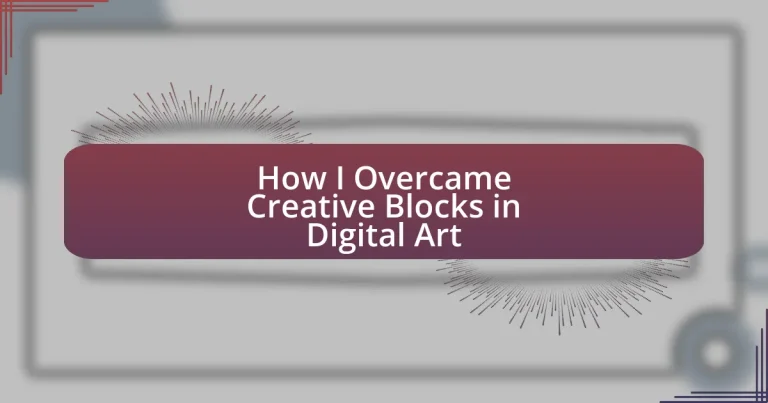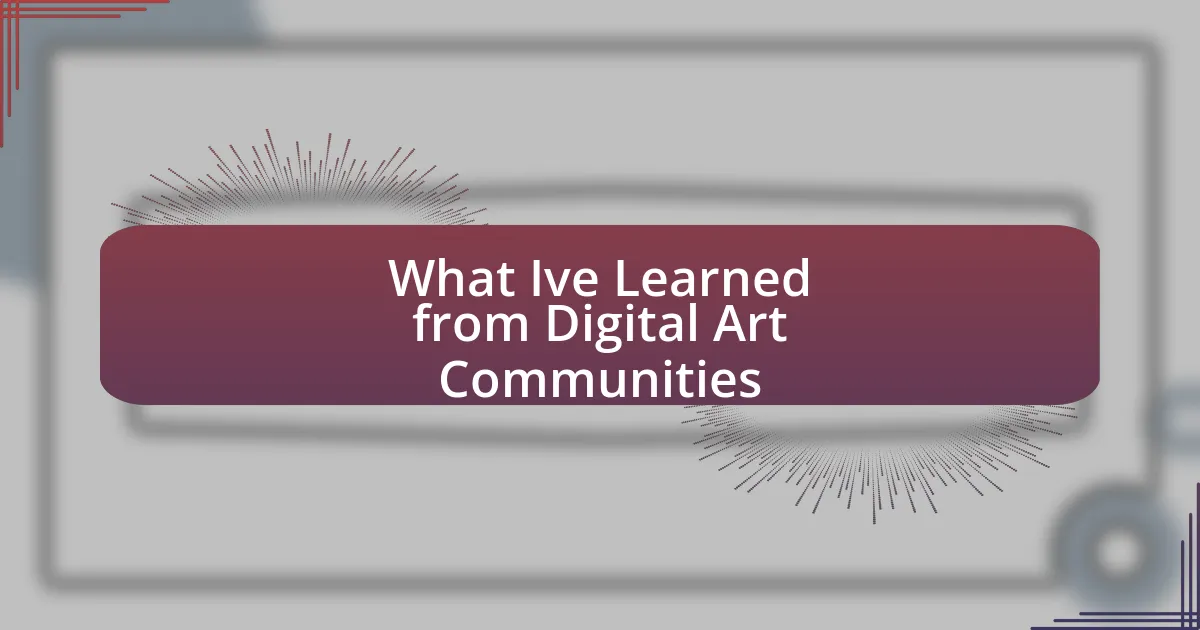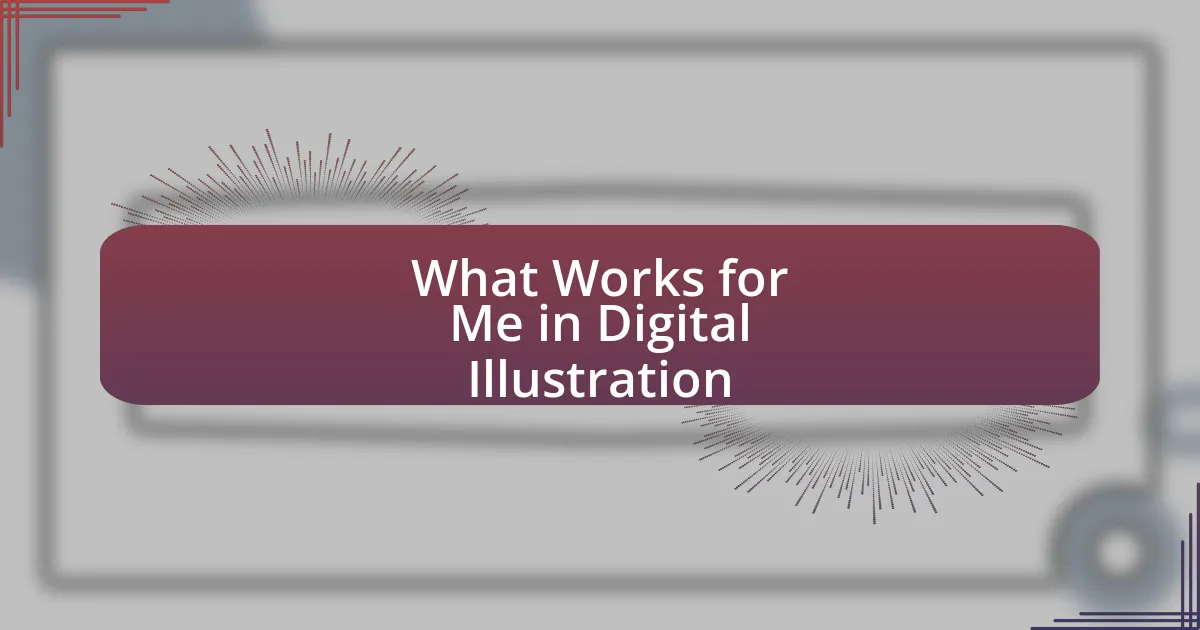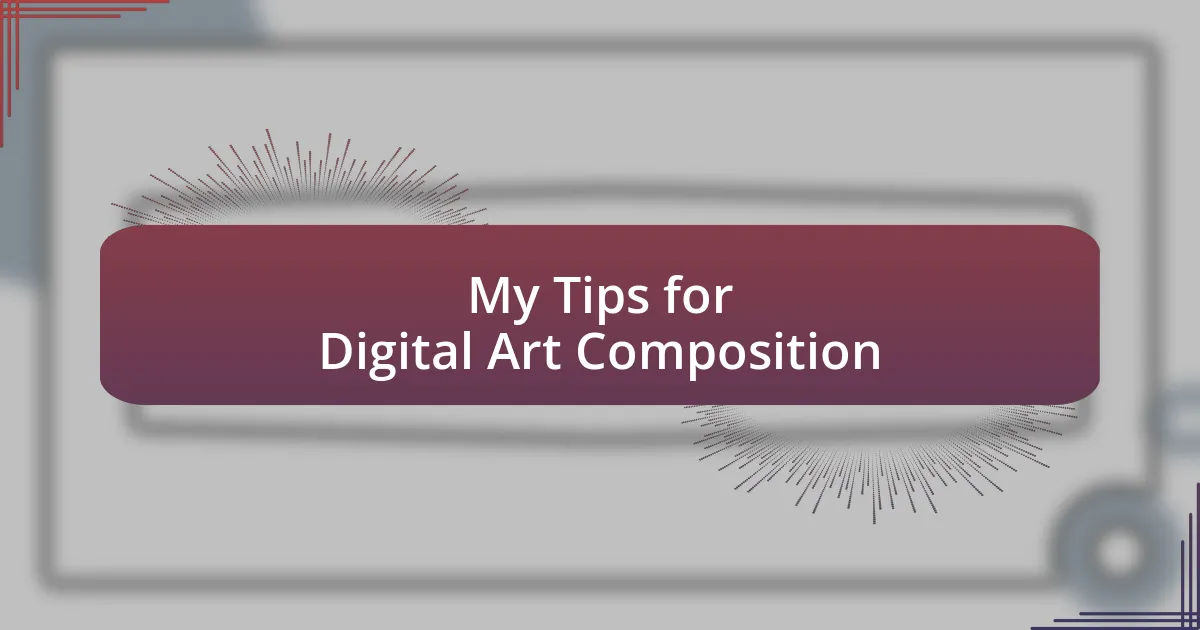Key takeaways:
- Creative blocks often arise from internal pressures, emotional states, and external distractions; acknowledging these factors can help mitigate their effects.
- Identifying personal triggers such as perfectionism and distractions allows for the creation of a supportive environment for creativity.
- Implementing a structured routine and exploring different artistic techniques can rejuvenate creativity and offer new perspectives.
- Engaging with the work of other artists provides inspiration and reinforces the communal nature of the creative journey.
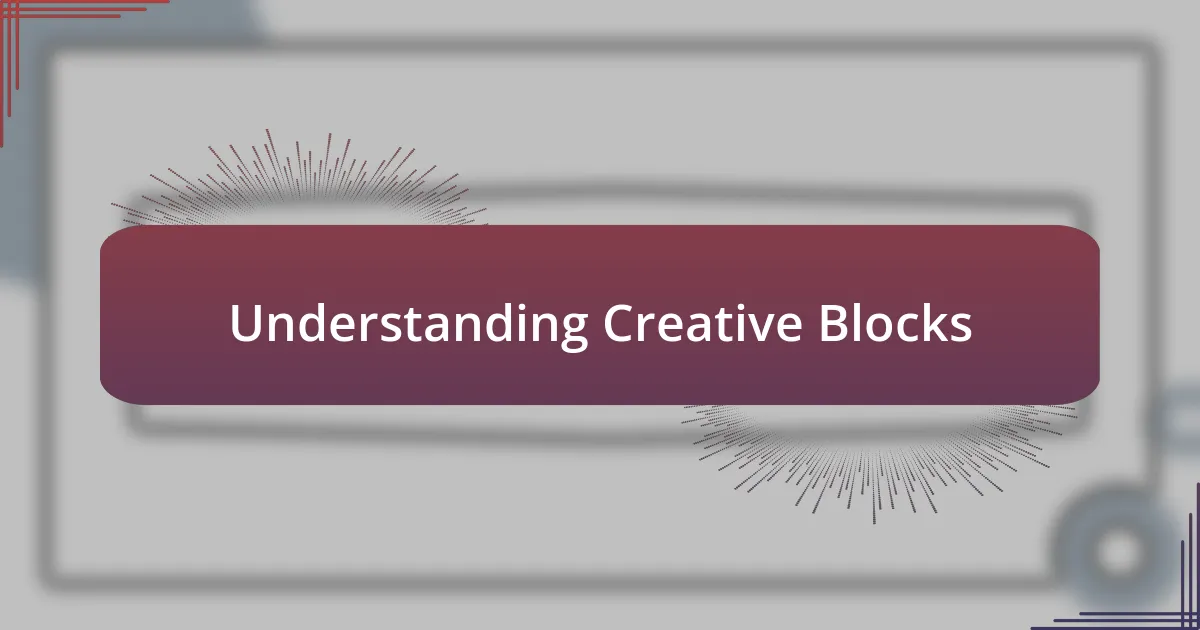
Understanding Creative Blocks
Creative blocks can be elusive, often creeping in when you least expect them. I remember sitting in front of my canvas, staring at the blank space, feeling like I was trapped in a maze with no exit. It’s frustrating, isn’t it? You want to create, but your brain feels like it’s running in circles.
One discovery that helped me was realizing that creative blocks frequently stem from internal pressures. The weight of expectations, whether self-imposed or from others, can suffocate the artistic flow. Have you ever felt that? I certainly have, and it made me question the very reasons I started creating in the first place.
Sometimes, emotional states play a significant role in stifling creativity. When I’m feeling anxious or overwhelmed, picking up that digital pen can feel like a monumental task. Reflecting on those feelings has taught me that acknowledging my emotions can be the first step in breaking down those barriers. What if instead of fighting against the block, we embraced the feelings behind it?
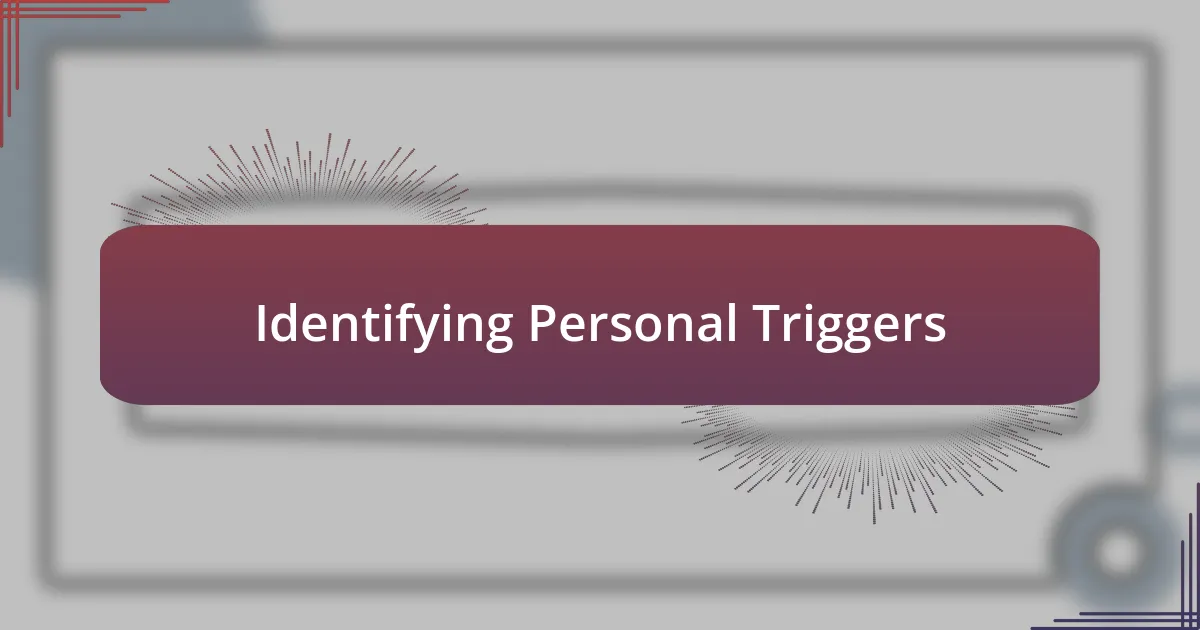
Identifying Personal Triggers
Identifying my personal triggers was a game-changer in overcoming creative blocks. There were moments when I would sit in front of my digital canvas, the urge to create dulled by external distractions or an inner dialogue riddled with negativity. Recognizing that my environment and mindset made a difference was key. For instance, it became clear that messy workspaces or a noisy setting could stall my creativity. Once I acknowledged these triggers, I was better equipped to manage them.
Here are some common personal triggers I identified that can hinder creativity:
- Perfectionism: The insistence on creating something flawless can paralyze me before the process even begins.
- Distractions: Notifications from my phone or background noise can easily break my focus.
- Fatigue: When I’m too tired, my brain isn’t in the right space to conjure new ideas.
- Pressure: Sometimes the weight of needing to produce something “amazing” can be overwhelming.
- Emotional States: If I’m feeling down or anxious, it can feel impossible to dive into my art.
By pinpointing these triggers, I found that I could create a supportive environment for my creative process, ultimately leading to more productive sessions.
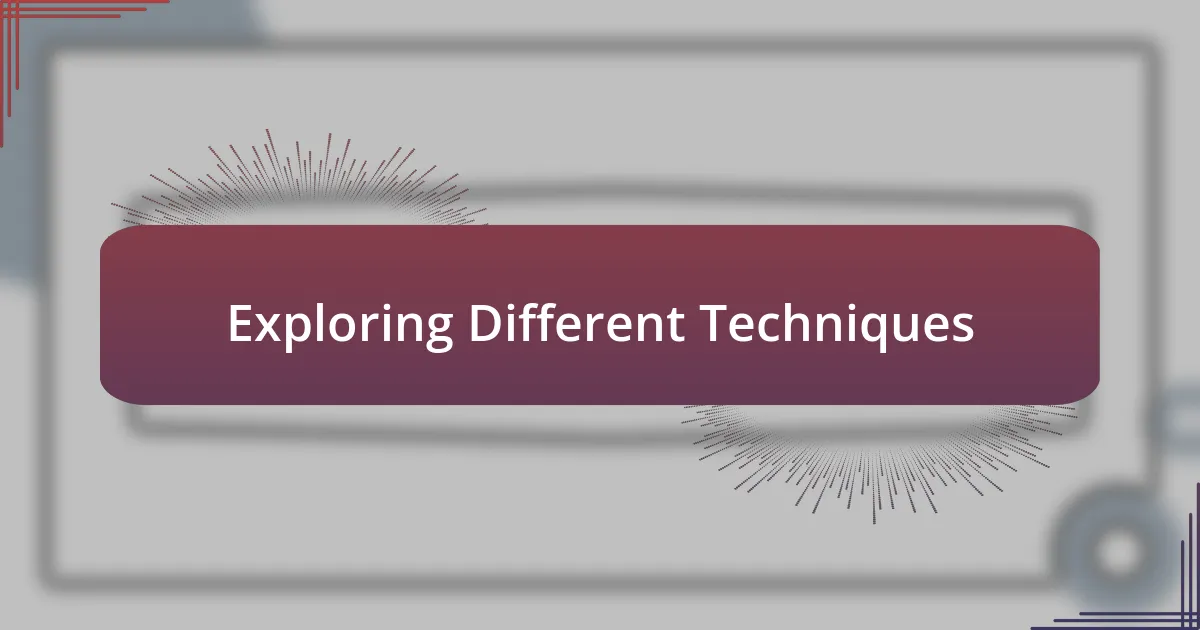
Exploring Different Techniques
Exploring different techniques to overcome creative blocks has been a fascinating journey for me. One approach I found effective is experimenting with different mediums. When I switched from digital painting to traditional sketching, I noticed a significant shift in my creative flow. The tactile feeling of pencil on paper sparked ideas I hadn’t anticipated and broke the monotony of my usual routine.
Another technique that worked wonders was setting small, achievable goals. I started creating tiny, finished pieces that took less than an hour. This practice not only boosted my confidence but also reignited my love for creating. It felt liberating to complete artworks without the pressure of perfection, allowing my imagination to run wild without constraints.
Lastly, I discovered the power of themed challenges. Engaging in monthly prompts or art challenges has helped me step outside my comfort zone. I remember a month when I focused solely on wildlife art; it pushed me to explore subjects I wouldn’t normally consider. This variety kept my creativity alive and inspired new ideas I still draw from today.
| Technique | Description |
|---|---|
| Experiment with Different Mediums | Switching from digital to traditional art can refresh creativity. |
| Set Small, Achievable Goals | Creating small pieces boosts confidence and reduces pressure. |
| Themed Challenges | Monthly prompts encourage exploration of new subjects and styles. |
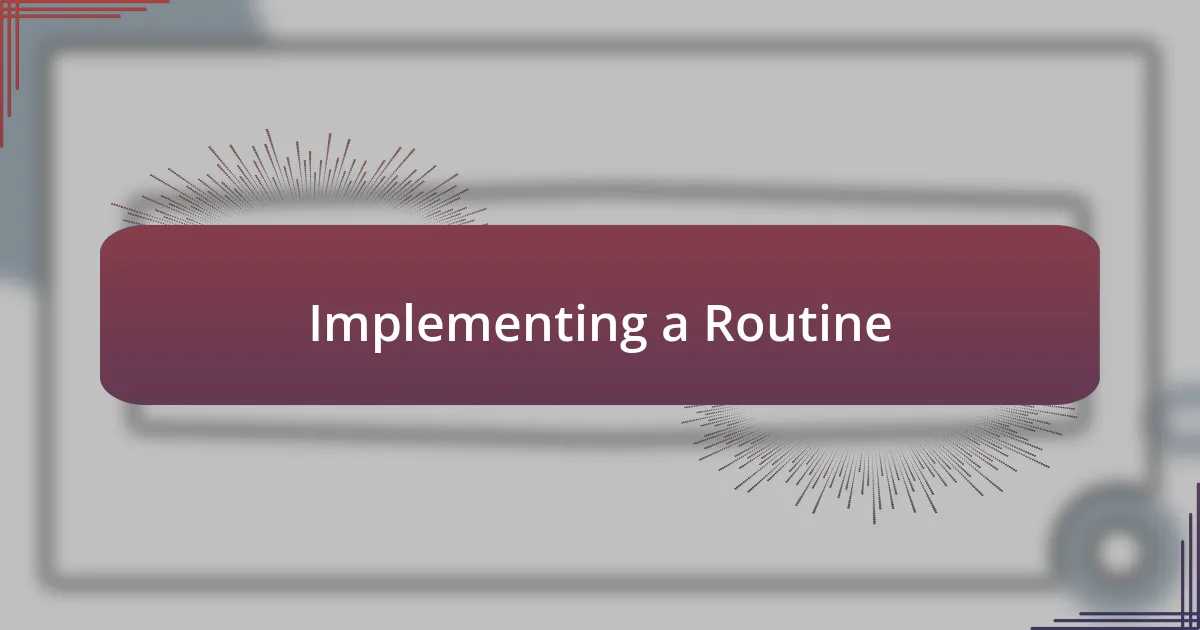
Implementing a Routine
Implementing a routine has been a game-changer in my creative process. Initially, I felt disorganized and overwhelmed, which only intensified my creative blocks. By setting a specific time each day dedicated to art, I instilled a sense of discipline that transformed my approach. Now, I eagerly anticipate these moments of creativity, almost like a daily ritual that nurtures my imagination.
I remember the first week of establishing this routine; I struggled to let go of distractions. But as the days passed, I found it easier to disconnect from my phone and immerse myself in my art. It was enlightening to see how setting boundaries around my time allowed my ideas to flourish. Have you ever experienced that shift when you finally focus solely on your passion?
Similarly, I began to incorporate short breaks within my artistic sessions, which might sound trivial, but it made a significant difference. Stepping away for just five minutes to stretch or grab a cup of tea often brought fresh perspectives. These small adjustments to my routine not only replenished my energy but also reignited my enthusiasm for creating. It’s fascinating how a little structure can grant us the freedom to explore and experiment without fear.
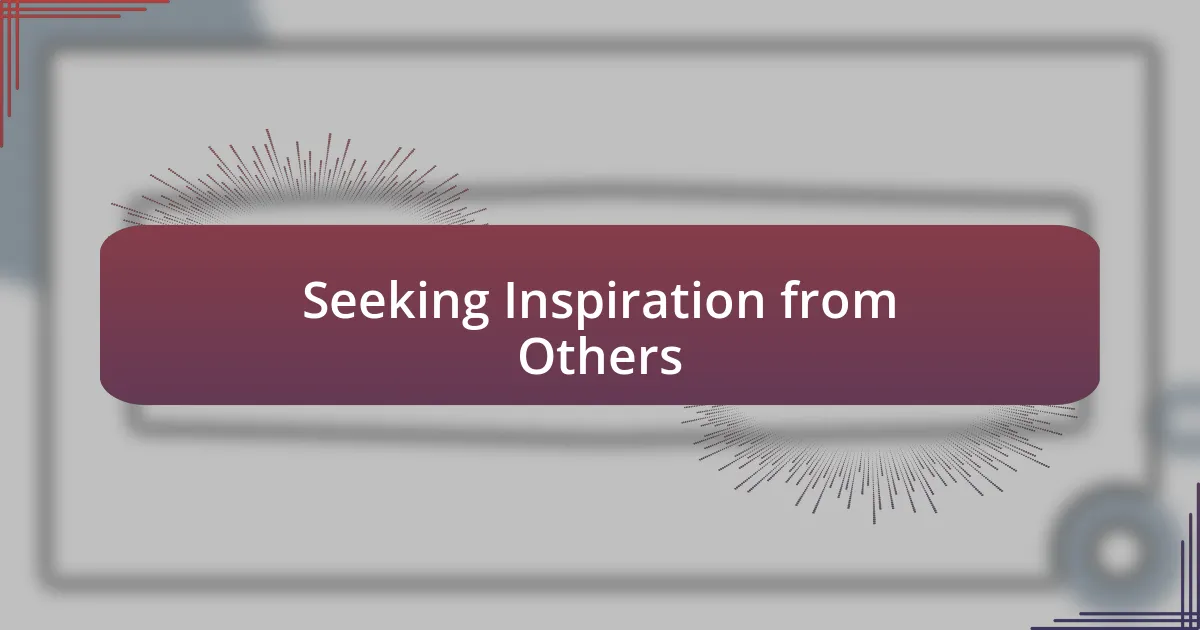
Seeking Inspiration from Others
Engaging with the work of other artists has often served as my lifeline when I face creative blocks. I find myself scrolling through online galleries, not just admiring techniques but also feeling emotionally touched by the stories behind the art. Have you ever come across a piece that resonated deeply with you? For me, those connections spark a fire within that pushes me to create my own narratives.
One particular instance stands out: I attended a local art exhibition featuring emerging digital artists. Their raw energy and distinct styles were incredibly inspiring. I couldn’t help but feel the urge to experiment with my own art after witnessing their bold choices. It made me realize that seeking inspiration isn’t just about copying techniques; it’s about absorbing different perspectives and translating them into something uniquely mine.
I constantly fill my environment with creative influences, whether it’s through listening to artist interviews or watching process videos. When I hear them talk about their struggles and breakthroughs, it normalizes my own challenges. It invites me to push through, reminding me I’m not alone in this creative journey. Isn’t it refreshing to know that even the most celebrated artists encounter blocks just like we do? It’s these exchanges that remind me creativity is a communal experience; sharing our journeys fosters growth and sparks new ideas.
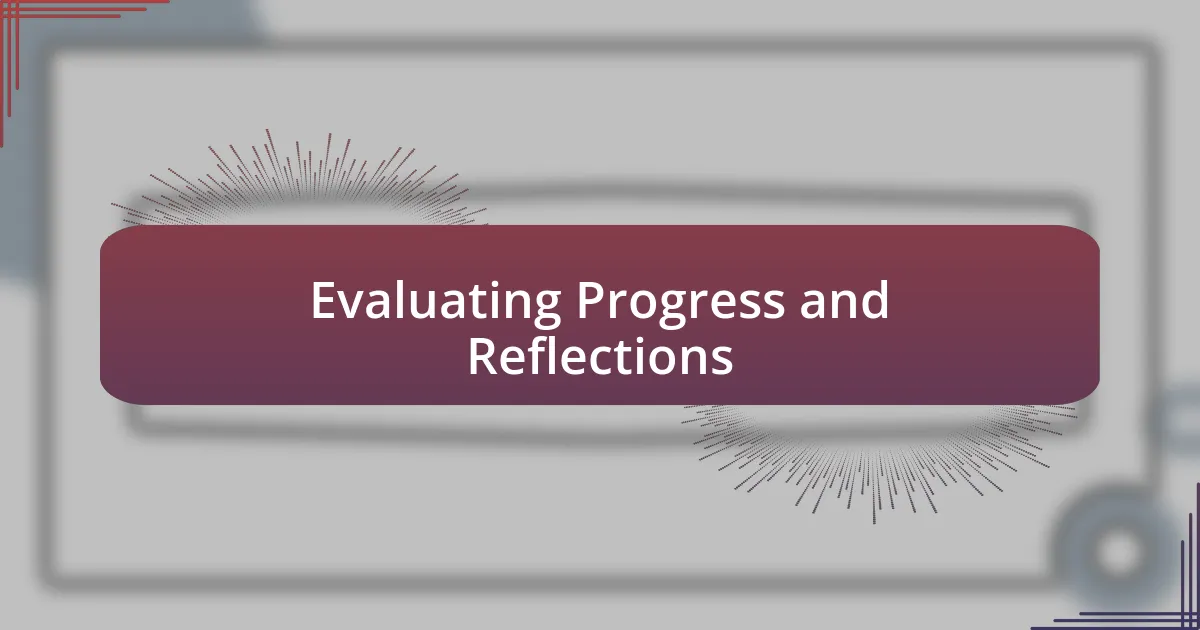
Evaluating Progress and Reflections
Tracking my progress in digital art often reveals a more insightful picture than I initially perceive. I remember the first time I looked back at a series of my sketches from a few months earlier; what struck me was not just the evolution of my techniques but also the emotional narratives woven into each piece. Have you ever felt that satisfaction when realizing you’ve grown, even when it wasn’t immediately apparent?
Reflecting on my journey, I find it invaluable to document my thoughts along with the artwork I create. This combination has proven to be a powerful tool—they illuminate my thought process during different phases of inspiration and blockages. For instance, I regularly write down my feelings before and after completing a piece; revisiting this allows me to connect my emotional state with creative outcomes. It’s like holding a mirror to my artistic soul.
Every challenge I’ve faced has contributed to my overall growth as an artist. I recall a phase where I struggled with color choices, which felt like a wall I couldn’t breach. Looking back, I see that this period taught me to experiment and embrace mistakes, ultimately allowing for richer color palettes in my recent work. Recognizing such shifts makes me eager to tackle future challenges. How often do you celebrate your small victories in creativity? I believe it’s these reflections—both the bumps and breakthroughs—that transform our creative processes.
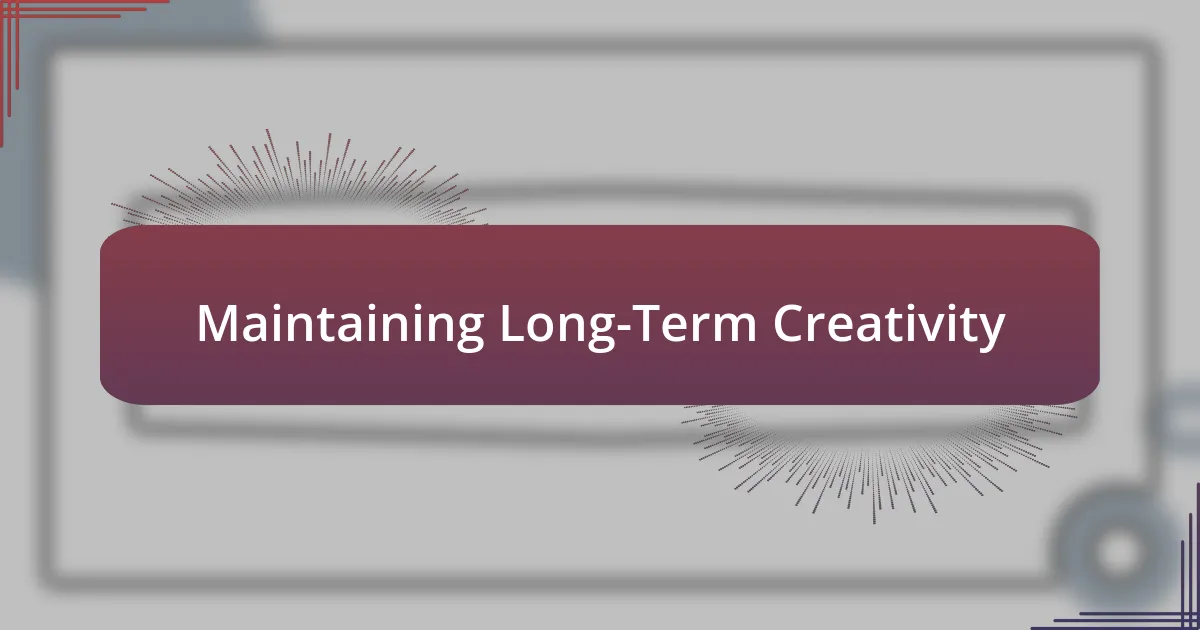
Maintaining Long-Term Creativity
Maintaining long-term creativity requires intentional habits and practices. For me, setting aside time for exploration has been crucial. I often find joy in stepping away from my main projects to experiment with new mediums or styles. Have you ever tried something completely different just for the fun of it? This playful approach keeps my creative juices flowing and reminds me of the excitement that sparked my love for digital art in the first place.
One technique that works wonders is creating a visual journal. I’ve started to document not just my finished works but also the ideas and sketches that come to mind throughout the day. It’s fascinating to look back and see how those casual doodles often evolve into substantial projects. This process not only nurtures my creativity but also validates those fleeting thoughts that might otherwise slip away, reminding me that every idea has value.
Additionally, prioritizing self-care has played a significant role in maintaining my creativity. There were times when I pushed myself too hard, and I experienced burnout, which stifled my inspiration. I’ve learned that incorporating regular breaks, enjoying nature, or simply allowing my mind to wander can recharge my creative batteries. Have you noticed how stepping outside can shift your perspective? For me, these simple moments often lead to bursts of inspiration that carry my art to new heights.

